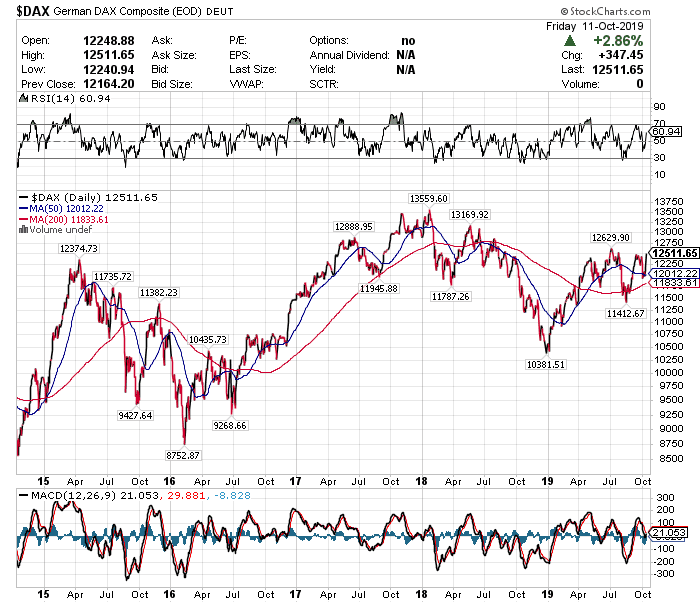Founded in 1988, the DAX (Deutscher Aktienindex) is a German blue-chip stock market which is made up of the 30 largest German companies with its performance computed by order book volume and market capitalization making it, essentially, the German equivalent of the Dow Jones Industrial Average…#munKNEE/Money!
There are two versions of the DAX:
- the performance index and
- the price index.
The former is more commonly quoted because it is a measure of total return, whereas the latter is closer in comparison to regularly quoted indexes from around the world. This is also why it is not considered an accurate barometer for the economy in its entirety….
If a company under-performs and falls below a ranking of 45, they can be removed from the index…[and,] likewise, if companies break through the top 25 companies they can be added to the index…
The DAX is a favorable place to trade because:
- it offers traders a very high level of liquidity, tight spreads, and long hours (9 am GMT to 5:45 pm GMT) with which to access the market and, even after the closing bell, most providers will offer pre- and post-market indications which is very handy when trying to gauge where the market might open and
- it is notorious for having easily spottable trends. Traders around the world generally find these patterns to be clean regardless of time frames making the DAX a great market to follow in order to gain or hedge exposure to equities.
Here’s How The DAX 30 Index Is Looking:

The above excerpts from the original article by Gil Ben Hur have been edited ([ ]) and abridged (…) for the sake of clarity and brevity.
 munKNEE.com Your Key to Making Money
munKNEE.com Your Key to Making Money